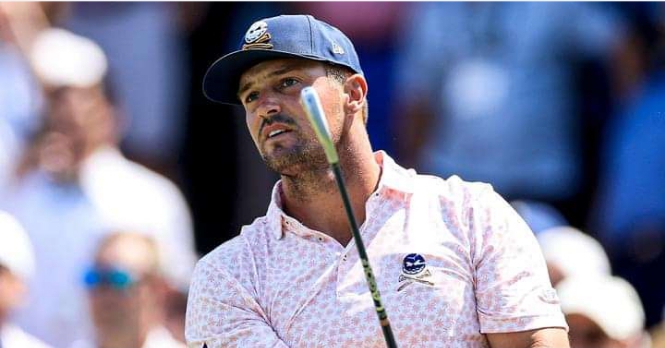Bryson DeChambeau sends brutal warning to Phil Mickelson after Phil accused him of inappropriate…….
Bryson DeChambeau sends brutal warning to Phil Mickelson after Phil accused him of inappropriate…….
says his U.S. Open-winning irons are coming to market, date still TBD
Bryson DeChambeau is turning heads everywhere on the heels of his U.S. Open victory, but the heads most equipment geeks want to know more about are those self-designed, 3D-printed irons that DeChambeau has used since debuting them at the Masters in April. Specifically, when are they coming to market?
On Wednesday during a press conference ahead of this week’s LIV Golf Nashville event, DeChambeau said that a consumer-version of his irons is on the way. But specifically when and at what price point is still uncertain.
“They’re one of one right now, and we’re working on building a set for the mass consumers,” DeChambeau said, “but it takes a little bit of time to get everything in production in the right way.”
DeChambeau’s clubs are from Avoda, a small manufacturer that makes single-length designs and combo-length designs. The company’s models are typically forged heads featuring a kind of muscle-cavity shaping. DeChambeau’s irons, however, are more of traditional muscleback look, although not a traditional design, of course. DeChambeau’s prototype set features face curvature from heel to toe (bulge), particularly on the lower-lofted irons. (DeChambeau’s irons are traditionally very strong-lofted, including a 5-iron that has 17 degrees of loft.) That characteristic, somewhat unique in the design of most irons but commonplace in woods, creates a starting angle that’s farther right of the target for a toe miss. That means a mis-hit will curve more efficiently back toward the center line.
DeChambeau believes that a typically straight-faced iron that doesn’t feature bulge, particularly for extremely fast swing speeds like his, would hook too severely. Hence, he designed the unique curvature to combat that tendency. However, the only way those irons initially could be made was to have them 3D-printed, a manufacturing process that doesn’t use molds like in a typical casting, but “builds” the shape by depositing steel powder on a grid the way a laser printer deposits ink on a piece of paper.
DeChambeau explained the concept on Golf Channel earlier this year after the USGA approved his irons just days before the start of the Masters.
“Essentially, when I was hitting it on the toe, I was hooking it like crazy,” he said. “On the heel, I was missing it right like crazy. So I created curvature on the toe and the heel [of the iron faces] to get it started a little farther right on the toe and on the heel start it a little father left so it makes sure it doesn’t go too far offline. Much like the driver.”
It’s unlikely that a consumer version of DeChambeau’s irons would be 3D-printed, if only because that would mean the set might cost five times as much as a typical set of irons. It’s also not clear why irons with bulge would be particularly helpful for average players with non-Bryson-like swing speeds. One scientist we spoke with said such a design might see a three- to five-yard improvement in curve correction at high speeds but decreasing effect at lower speeds: “For average consumers the complexity of the squeeze of making an iron with bulge may not be worth the juice of the improvement, and consumers are mostly happy with hybrids, anyway,” our source suggested.
But DeChambeau thinks so far out of the box that’s what left of the cardboard is already off to be recycled. He’s also got a prototype driver in the works that isn’t yet on the conforming list.
“You’re going to see some pretty interesting stuff coming out here soon within the next month with a driver that could be pretty unique for the market, and it’ll help a lot of golfers out,” he said.
And that wedge that hit the bunker shot heard round the world? DeChambeau even worked on that design (a Ping Glide 4.0 56-degree), too.
“I almost have no bounce on my wedge, but it has a wider sole, and that was a massive thing for me,” he said. “I literally built it, I think, about less than a month ago, so my wedge game has just gotten really good recently because of that grind.”
After the last few days, we’re wondering what it is that DeChambeau can’t do. Stay tuned.
